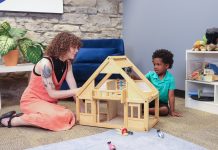
I have teenagers, and I monitor their phones.
Arguments against it are plentiful and passionate: monitoring kids’ phones today is akin to our parents reading our diaries, listening to our phone conversations, or reading notes we passed in school. There’s debate that children won’t be capable of handling their online presence if we hover, or parents can’t build a trusting relationship with their kids if they are monitoring them. While all valid cases, they miss an essential point. It is possible to watch over your kids while encouraging independence and responsibility, and as parents, it is our obligation to do so.
Logically, there is no comparison to our youth. We didn’t have access to the kind of content on the web today. Porn was found in magazines, and no gadget could directly link us to strangers with ulterior motives. Rumors were spread by word of mouth, and no blast on someone’s reputation could garner thousands of views a day. That’s not to say that evil and danger is new to this generation, but with smartphones, we allow kids access to more than they are ready to handle.
We don’t send kids off on bicycles without starting with training wheels, and we don’t give them licenses without requiring permits. Let’s not hand kids phones without educating them on the potential dangers. Offering devices to play games on and watch Netflix also grants them a direct link to sex, drugs, cyberbullying, and potential predators. In our youth, none of this was conceivable, let alone possible. Unless you believe your child is ready for everything the internet offers, you need to set boundaries.
 Many cutting edge apps address this. In our house, one which monitors while allowing independence is the Bark app. According to their website, “Bark is an app that monitors your child’s texts, chats, emails, and 24+ social media platforms for serious issues like cyberbullying, adult content, sexual predators, profanity, suicidal ideation, and more.” Bark empowers as it monitors. There’s no need to filter through phones each night. Kids deserve a level of privacy. Spying on everything they’ve said or done with their phones feels intrusive. Not to mention, kids are more tech-savvy than parents and I guarantee if you’re utilizing this method to keep tabs on your kids, you’re missing a majority of their activity.
Many cutting edge apps address this. In our house, one which monitors while allowing independence is the Bark app. According to their website, “Bark is an app that monitors your child’s texts, chats, emails, and 24+ social media platforms for serious issues like cyberbullying, adult content, sexual predators, profanity, suicidal ideation, and more.” Bark empowers as it monitors. There’s no need to filter through phones each night. Kids deserve a level of privacy. Spying on everything they’ve said or done with their phones feels intrusive. Not to mention, kids are more tech-savvy than parents and I guarantee if you’re utilizing this method to keep tabs on your kids, you’re missing a majority of their activity.
Bark adopts the latest algorithms, keying into teen verbiage and keeping up with online dangers. An email arrives highlighting any questionable material, and you determine what’s truly an issue. Admittedly, there will be unnecessary alerts; for example, my teen watches SNL on YouTube. There isn’t an SNL skit which won’t set off an alert, so I often get irrelevant notifications. However, when both of my teens posted schedules on Instagram last fall to determine who had classes with them, Bark immediately alerted me to the risks of them sharing personal information, such as addresses and student ID numbers. Bark fishes with a broad net and parents have the power to sort through what it catches. I would much rather discard information than to miss a single red flag.
Yet Bark still gives my kids freedom and independence, and only when there’s questionable activity am I involved. Not only does Bark send alerts, but it provides coaching on how to address the alerts with your child. My kids will be off to college soon enough. I want to foster their ability to self-navigate, but I’m not throwing them out there without a safety net. They have the freedom to try and balance on their own, but if they fall, Bark catches them.
Plenty of monitoring apps exist. The essential component of any strategy you adopt is communication. Let your children know you’re aware of what they’re doing. Keep an open dialog without micromanaging every action online. Discuss the real issues, and let the minor issues go. Our role as parents isn’t to involve ourselves in their friendships, and we don’t need to be up on the gossip. Strive to build awareness of their presence online, teach the value of it, and impress upon them the permanence of the footprint they leave. Digital maturity must be learned over time, let’s take the time to teach it at home.










